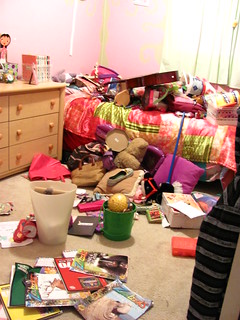
One of the issues is booking labs. Some periods have only one or two labs available for about a thousand students. This means my teaching has to be rigidly planned, because if I’m planning something that incorporates technology then lab availability is the main thing that dictates the timing. Having students complete the activity at home removes some of the potential for prompt feedback – it’s a lot more efficient to be able to sit down with a student in front of a computer than going back and forth via Twitter, email, or Moodle. Luckily, I’m fairly organized so I’m usually able to book my lab time weeks in advance.
However, for two periods out of our eight-period schedule, there are no labs at all. This means that I’ve got to find another way for students to complete technology-based activities. I’ve tried bringing in my WiMax router from home and asking students to bring in their own laptop or tablet – so for a recent infographic assignment, some students have been working on laptops, some on iPads, and some on (gasp) iPhones. Unfortunately, I have never gotten 100% of the students to remember. This means wasted instructional time for the students who haven’t brought the appropriate piece of tech. I’ve provided pen-and-pencil based alternatives in these cases, but it’s far from ideal.
Unplanned and/or incidental device use has gone more smoothly. My school relaxed its policy on personal electronic devices (PEDs) this year, and students can now have them in class, to be used at the teacher’s discretion. They’re also free to use them during breaks and lunch. This policy has been really effective in my classrooms. One students downloaded a PDF copy of class readings to his Galaxy SIII, and another did the same on her Kindle Fire. The kids are very conscious about asking for permission to look up words and images online using their phones. The new policy is contributing to a new culture of “know where.” I just wish that PEDs were more ubiquitous; despite popular perception, perhaps 40% of my students have smartphones, and just 10 or 15% have mobile internet access. I can’t justify reshaping my lessons to depend on technology when it’s available only for a minority – it’s not fair to the rest of the kids. I am, however, happy to integrate it as opportunities arise.
